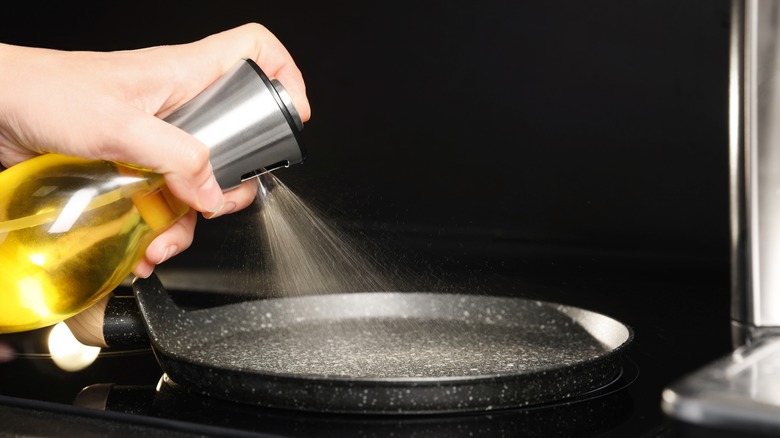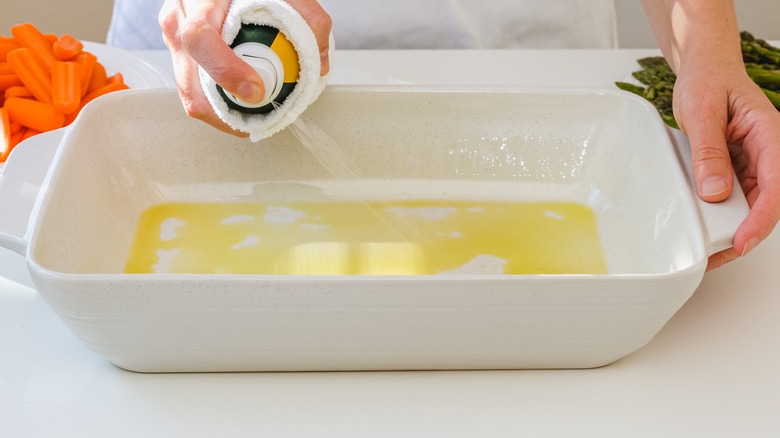How Fat-Free Cooking Spray May Be Deceiving You
Back in the day, people used to grease baking sheets with butter or shortening. One of the easiest ways to do it was to dip a paper towel in butter, using the paper as a buffer to spread the butter all over a pan, but in an effort to reduce the fat and calories people were consuming, PAM cooking spray was invented in the 1950s to serve the same purpose.
If you look at the nutritional information on a can of PAM or any other cooking spray, you'll see a lot of zeros next to calories, fat, cholesterol, sodium, and pretty much every other tag. And considering just one tablespoon of butter has about 100 calories, cooking spray may seem like a dream come true. But fat-free cooking spray may, in fact, be too good to be true.
The ingredients listed on a can of cooking spray usually include things like canola oil, palm oil, and coconut oil, among a few other structuring and preserving agents. We know that oil is a fat so how can cooking sprays be completely fat-free? Let's find out.
Cooking spray has insignificant amounts of fat
The reason cooking sprays can list zero grams of fat on their label comes down to technicalities. You're not wrong for being confused — the oils listed on the label are fats though canola and palm oils are considered healthier alternatives to butter. The answer lies in the serving size.
Flip over a can of cooking spray and check out the serving size on the label. A can of original PAM describes a serving size as a spray that's a quarter of a second long. Both Good & Gather's organic canola oil cooking spray and Crisco's original cooking spray describe a serving as a spray a third of a second long. But more importantly, all three brands say this equates to 0.25 grams of spray, and that's the most important part.
According to the FDA AOAC Official Method of Analysis, brands only have to list the fat content of their products if it's more than half a gram per serving. Otherwise, the fat content is listed as zero. A similar rule applies to saturated fat and calories. If the serving size is less than half a gram, brands can say their product is saturated fat-free, and if each serving contains under five calories, they can put a zero in that slot too.
So that's the mystery solved. Fat-free cooking spray absolutely does contain fat, but the amount per serving is so low that the FDA doesn't require the brand to count it. As far as the federal government is concerned it's such an insignificant amount of fat, it's not worth mentioning — that is of course if you're actually only using your cooking oil spray for a fraction of a second, but who does that?

